Welcome to our exploration of the Polysexual Flag – a vibrant symbol that encapsulates the diversity and beauty of polysexuality. In this discussion, we delve into the meaning behind each bold color, unravel the symbolism woven into the flag’s design, and appreciate its role within the LGBTQ+ community.
Join us as we celebrate the colors, beauty, and profound symbolism of the polysexual flag, a beacon of pride and identity for those embracing the spectrum of attractions across multiple genders.

Download the Polysexual Flag as a HR PNG or SVG.
Meaning and Symbolism
The Polysexual Flag is a vibrant and meaningful symbol that represents the polysexual community, offering a visual representation of their identity and pride. Designed with three horizontal stripes of different colors, the flag has its own unique significance and history.
The first stripe of the Polysexual Flag is pink, symbolizing attraction to those who identify as female. This encompasses individuals who are attracted to women, regardless of their own gender identity. The middle stripe is green, representing attraction to individuals who identify as non-binary or genderqueer. This inclusivity reflects the diverse spectrum of gender identities that exist beyond the binary. Finally, the blue stripe signifies attraction to those who identify as male, encompassing individuals who are attracted to men, regardless of their own gender.
One of the key aspects of the Polysexual Flag is its emphasis on acknowledging and celebrating a range of gender identities. It fosters a sense of unity within the polysexual community while recognizing the diversity of attractions and orientations that exist.
Similar to other pride flags, such as the asexual pride flag (Ace Flag), the Polysexual Flag serves as a visible and empowering symbol. It enables individuals to express their identity proudly and fosters a sense of belonging within the broader LGBTQ+ community. The use of distinct colors on the Polysexual Flag not only differentiates it from other pride flags but also reinforces the importance of recognizing and respecting diverse experiences within the spectrum of human sexuality.

History of the Polysexual Flag
The history of the Polysexual Flag is rooted in the need for visibility and representation within the LGBTQ+ community. Designed by an anonymous user on the internet, the flag was created to give a visual identity to individuals who identify as polysexual and to foster a sense of community and pride.
The Polysexual Flag was introduced to the public on the internet in 2012. Its design and colors were carefully chosen to symbolize the diverse spectrum of attractions experienced by polysexual individuals. The pink, green, and blue stripes on the flag represent attraction to individuals who identify as female, non-binary or genderqueer, and male, respectively.
Unlike some other pride flags, the Polysexual Flag doesn’t have a widely recognized creator or a formal organization associated with its origin. Instead, it emerged organically from the online LGBTQ+ community, highlighting the grassroots nature of many pride symbols. This decentralized creation process often allows for a more inclusive representation of various perspectives within the community.
The adoption and recognition of the Polysexual Flag have grown over the years as the visibility of polysexuality has increased. It has become an important symbol for individuals who identify as polysexual, offering a way to express their identity and connect with others who share similar experiences.
In essence, the Polysexual Flag’s history reflects the ongoing efforts within the LGBTQ+ community to create symbols and representations that accurately capture the diverse identities and experiences of its members. As a relatively recent addition to the array of pride flags, the Polysexual Flag continues to play a crucial role in fostering visibility, understanding, and a sense of belonging for those who identify as polysexual.

Colors and Their Representation
- Pink: Symbolizes attraction to individuals who identify as female, encompassing a broad range of gender expressions and reinforcing the inclusivity of polysexuality. It acknowledges the diverse experiences within the spectrum of attraction to women.
- Green: Represents attraction to individuals who identify as non-binary or genderqueer, underscoring the acknowledgment of attractions beyond the traditional binary of male and female. This color reflects the evolving understanding of gender identities and attractions in the LGBTQ+ community.
- Blue: Signifies attraction to individuals who identify as male, embracing a spectrum of attractions and making it clear that polysexuality encompasses a range of gender identities.
The intentional combination of these three colors on the Polysexual Flag serves as a vibrant visual representation of the diversity within the polysexual community. It emphasizes the fluidity and inclusivity of attractions experienced by polysexual individuals, reinforcing the message of acceptance and understanding.
It’s noteworthy that the Polysexual Flag shares a design approach with other pride flags, such as the asexual pride flag (Ace Flag). Each flag utilizes a combination of colors to symbolize different aspects of identity, fostering visibility and solidarity within the LGBTQ+ community. The Polysexual Flag, distinguished by its unique color scheme, stands as a powerful emblem, allowing individuals to express their identity proudly and find connection within the broader spectrum of human sexuality.
Scroll down to find the color codes for each color, or click here.
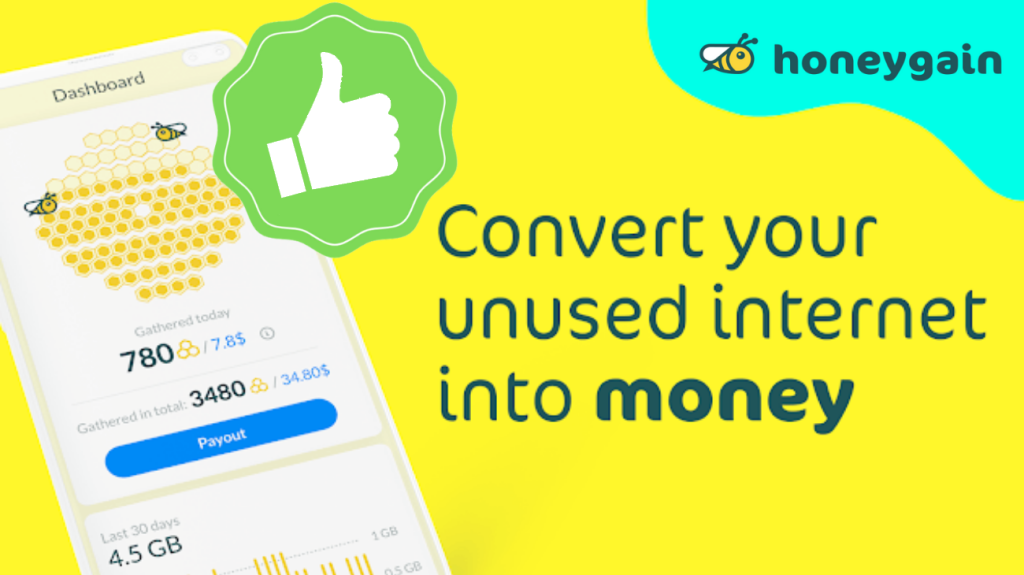
What are the RAL or Pantone colors of the poly flag?
The polysexual flag doesn’t have official Pantone or RAL specifications, the following approximations can be used:

PINK
Pantone: 219 C
RAL: 4010
HEX: #f61cb9

GREEN
Pantone: 7480 C
RAL: 6018
HEX: #07d569

BLUE
Pantone: 2727 C
RAL: 5015 Sky Blue
HEX: #1c92f6
Kindly be aware that the colors mentioned here are approximations, and the exact shades may vary based on factors such as the production method, material, and lighting conditions. For accurate color representation, it is advisable to utilize physical color samples or seek guidance from a professional color matching service.

Usage and Recognition
The Polysexual Flag, despite its relatively recent introduction, has gained recognition and usage within the LGBTQ+ community as a powerful symbol of polysexuality. Its usage extends beyond physical flags, finding a place in various online spaces, social media profiles, and LGBTQ+ events.
The flag’s design, with its distinctive pink, green, and blue stripes, allows individuals identifying as polysexual to express their orientation proudly. Many use the Polysexual Flag as a visual representation of their identity, showcasing it on personal items, clothing, and digital platforms. The visibility of the flag in these diverse contexts helps foster a sense of community among polysexual individuals and provides a means of recognition for allies.
Recognition of the Polysexual Flag has also grown within LGBTQ+ organizations and events. It is not uncommon to see the flag displayed alongside other pride flags, contributing to the inclusivity of such spaces. As awareness of polysexuality increases, so does the recognition of the Polysexual Flag as a meaningful symbol within the broader spectrum of sexual orientations.
The flag’s popularity and usage have been particularly prominent in online communities, where it serves as a virtual beacon for individuals seeking connection and understanding. Social media platforms have played a significant role in spreading awareness of the Polysexual Flag, allowing users to share their experiences, questions, and expressions of pride.
Related Flags and Symbols:

Rainbow Flag: The universally recognized LGBTQ+ Pride flag, featuring a spectrum of colors, designed by Gilbert Baker.

Transgender Pride Flag: Designed by transgender activist and Navy veteran Monica Helms, it consists of light blue, pink, and white stripes, representing the transgender community.
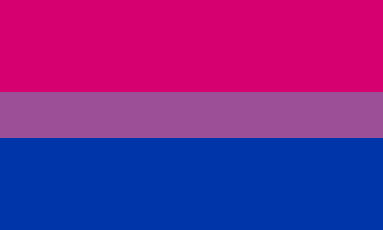
Bisexual Pride Flag: Created by Michael Page, it features three horizontal stripes—pink, purple, and blue—symbolizing attraction to more than one gender.

Pansexual Pride Flag: Designed by various activists, it consists of three horizontal stripes—pink, yellow, and blue—representing attraction regardless of gender.

Non-Binary Pride Flag: Created by Kye Rowan, it features yellow, white, purple, and black stripes, symbolizing genders outside the traditional binary.

Genderqueer Pride Flag: Designed by Marilyn Roxie, it features lavender, white, and dark green stripes, representing genderqueer, non-binary, and genderfluid identities.
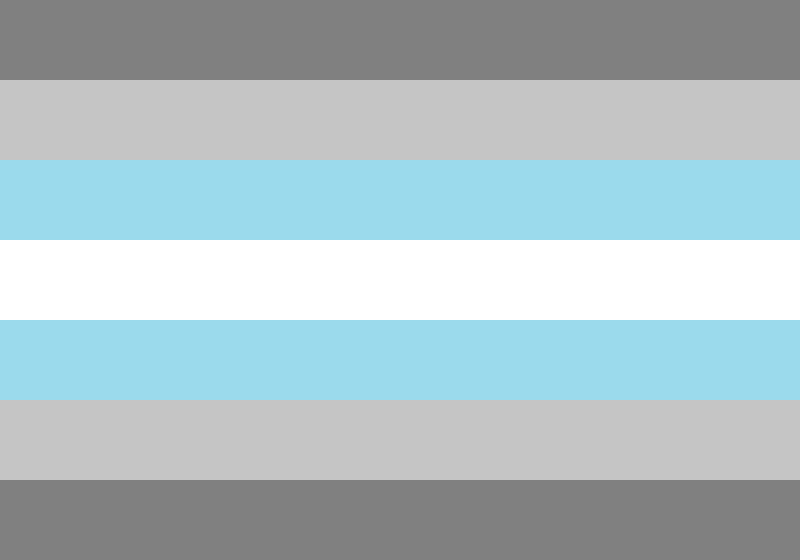
Demiboy Pride Flag: Designed by an anonymous Tumblr user, it consists of light blue, white, and black stripes, representing a partial connection to being male.

Demigirl Pride Flag: Also designed by an anonymous Tumblr user, it features light pink, white, and black stripes, representing a partial connection to being female.
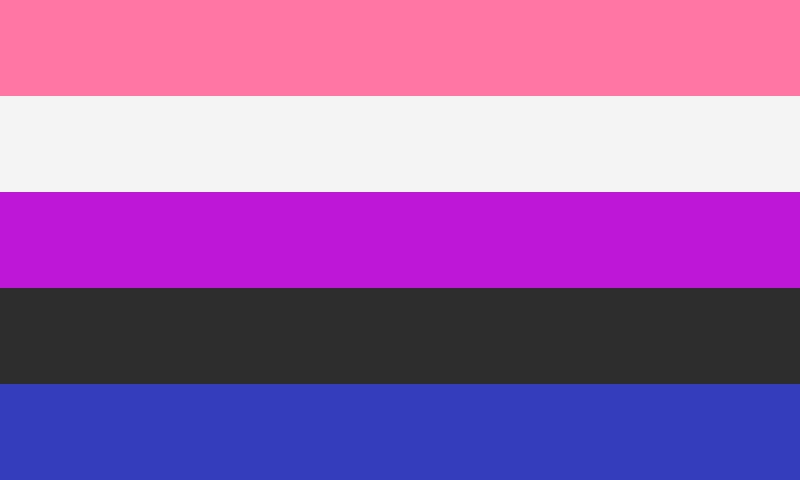
The Genderfluid Flag: designed in 2012 by activist JJ Poole, is a vibrant emblem symbolizing the diverse spectrum of gender identities, with each carefully chosen color representing different facets of the genderfluid experience.

The Omnisexual Flag: Omnisexuality involves attraction to all genders, with preferences varying. Created in 2015, the Omnisexual Pride Flag represents the gender spectrum with light pink and blue for femininity and masculinity, and dark purple for those outside traditional categories..
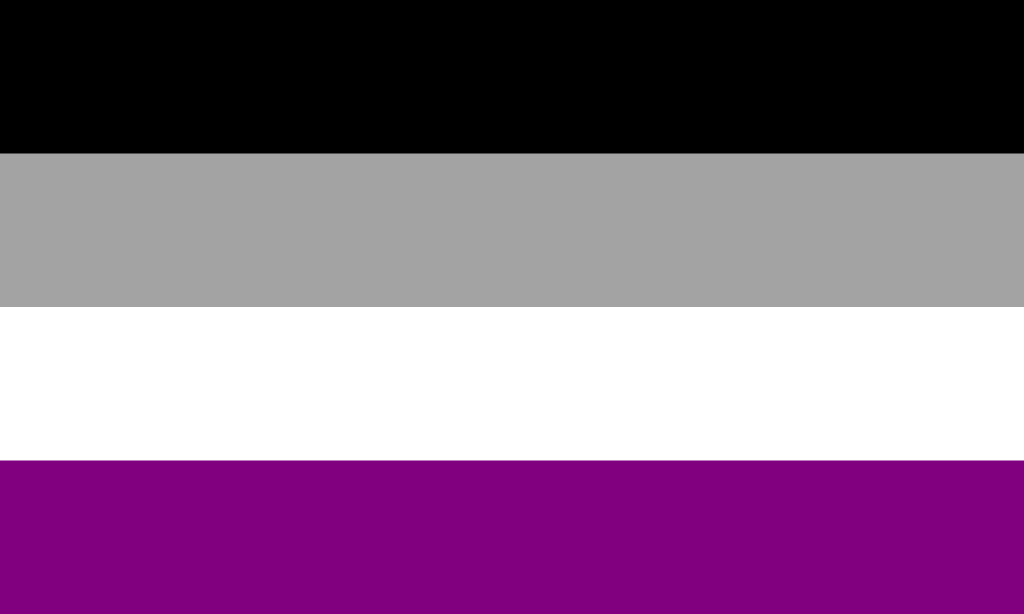
The Asexual Pride Flag:
Crafted in 2010 by StandUp of AVEN, the Asexual Pride Flag symbolizes the asexual community with its four horizontal stripes: black for asexuality, gray for the spectrum, white for sexuality, and purple for diversity. Read more.
Polysexual Community Acceptance and Adoption
The acceptance and adoption of the Polysexual Flag within the polysexual community play a crucial role in fostering a sense of belonging and visibility for individuals who identify as polysexual. As a symbol of pride and identity, the flag has become a unifying emblem embraced by those seeking to express their unique experiences within the spectrum of sexual orientation.
Within the polysexual community, the adoption of the Polysexual Flag is evident in various forms. Many individuals proudly display the flag on personal items, such as clothing, accessories, and even digital platforms like social media profiles. This visual representation serves as a powerful way for members of the polysexual community to connect with one another and assert their identity in a world that is becoming increasingly aware of diverse sexual orientations.
The acceptance of the Polysexual Flag also extends to community events and gatherings. Whether at LGBTQ+ pride parades or other related events, the flag is often prominently displayed alongside other pride flags, contributing to the rich tapestry of identities celebrated within the broader community. This recognition within communal spaces helps validate the experiences of polysexual individuals and reinforces the importance of acknowledging and respecting diverse attractions.
Online spaces, including forums and social media groups, have played a significant role in the acceptance and adoption of the Polysexual Flag. These platforms provide a virtual meeting place for individuals to share their stories, seek support, and connect with others who share similar experiences. The flag serves as a digital badge of pride, fostering a sense of community and acceptance in the virtual realm.
The acceptance and adoption of the Polysexual Flag within the polysexual community are integral to the ongoing journey toward greater visibility and understanding. As this symbol continues to be embraced, it contributes to the broader conversation surrounding sexual orientation, promoting inclusivity and acceptance within the LGBTQ+ spectrum.

What does it mean to be Polysexual?
Polysexuality is a facet of sexual orientation characterized by attraction to multiple genders, acknowledging a spectrum beyond the traditional binary framework. Unlike bisexuality, which historically refers to attraction to two genders, polysexuality embraces attractions to a diverse range of gender identities. Individuals identifying as polysexual experience fluid and dynamic attractions, finding themselves drawn to people irrespective of their gender identity. This orientation challenges societal norms, fostering inclusivity and contributing to a more comprehensive understanding of sexual orientation.
At its core, being polysexual involves recognizing the nuanced and diverse nature of attractions. This orientation allows individuals to navigate a complex landscape of human sexuality, affirming their experiences and contributing to increased visibility within the LGBTQ+ spectrum. Embracing the fluidity of attractions, polysexuality provides a platform for individuals to articulate their unique experiences and fosters a sense of community in a broader conversation about sexual orientation.

What are the different types of Polysexual people?
Polysexuality encompasses a spectrum of attractions, and individuals identifying as polysexual may experience diverse types of attractions. While the term itself refers to the capacity for attraction to multiple genders, the nuances of these attractions can vary widely among polysexual individuals. Here are some general categories that capture different types of polysexual experiences:
- Fluid Polysexuality: Individuals who experience changes or fluctuations in their attractions over time. The intensity or focus of attractions may shift, allowing for a dynamic and evolving experience of polysexuality.
- Balanced Polysexuality: Some polysexual individuals may experience relatively equal or balanced attractions to different genders. Their capacity for attraction remains consistent across a spectrum of gender identities.
- Gender-Preference Polysexuality: Others may find that their attractions lean more strongly toward specific genders while still acknowledging attractions to others. This can include preferences for one gender without excluding attractions to additional genders.
- Non-Binary Inclusive Polysexuality: Some polysexual individuals are specifically attracted to non-binary or genderqueer individuals. Their attractions may be primarily or exclusively directed toward those who identify outside the traditional gender binary.
- Queer-Adjacent Polysexuality: Polysexual individuals may also identify as queer, recognizing their attractions as part of the broader queer spectrum. This can signify an intersectionality of polysexuality with other aspects of their identity.
It’s crucial to note that these categories are not rigid or exhaustive, as the experiences of polysexuality are highly individualistic. The fluid nature of attraction and the broad range of gender identities contribute to a diverse landscape of polysexual experiences. Each person’s journey is unique, and these categories offer a general framework to understand the variations within the polysexual spectrum.

Inclusivity and Representation
The Polysexual Flag stands as a powerful symbol of inclusivity and representation within the LGBTQ+ community. Its design, characterized by three horizontal stripes of pink, green, and blue, deliberately includes and acknowledges a spectrum of attractions beyond the binary framework. The flag promotes inclusivity by symbolizing attractions to individuals who identify as female, non-binary or genderqueer, and male, respectively.
In terms of gender representation, the Polysexual Flag is particularly notable for its recognition of attractions to non-binary and genderqueer individuals. By incorporating a distinct green stripe, the flag visually communicates an acceptance of attractions that go beyond the traditional male-female binary. This inclusivity aligns with the evolving understanding of gender identities within the LGBTQ+ community, fostering visibility for those who identify outside the binary spectrum.
The representation provided by the Polysexual Flag extends beyond its visual presence. As individuals proudly display the flag, whether at LGBTQ+ events or in digital spaces, it serves as a beacon for others seeking a sense of community and understanding. The flag communicates that polysexuality is a valid and recognized aspect of the diverse spectrum of human sexuality.
Support and Resources
Polysexual individuals, like others within the LGBTQ+ community, can benefit from various forms of support and resources that cater to their unique needs and experiences. Here are some avenues where polysexual individuals can find assistance, connection, and information:
- Online Communities: Joining online forums and social media groups dedicated to polysexuality provides a platform for individuals to share experiences, ask questions, and connect with others who understand their journey. Platforms like Reddit, Facebook, or dedicated LGBTQ+ forums often host supportive communities.
- LGBTQ+ Organizations: Many LGBTQ+ organizations and centers offer resources, support groups, and counseling services that are inclusive of polysexual individuals. These organizations work towards creating safe spaces and promoting visibility within the larger LGBTQ+ community.
- Educational Resources: Libraries, websites, and educational platforms focused on LGBTQ+ issues often provide resources specific to different sexual orientations, including polysexuality. Accessing literature, articles, and educational content can enhance understanding and facilitate self-acceptance.
- Counseling and Mental Health Services: LGBTQ+-affirmative therapists and counselors can provide support to polysexual individuals navigating personal and relationship challenges. Seeking professional assistance can be beneficial in addressing mental health concerns or exploring one’s identity in a supportive environment.
- Pride Events and Parades: Participating in LGBTQ+ pride events and parades offers an opportunity for polysexual individuals to connect with others, celebrate their identity, and find a sense of community. These events often provide a supportive and affirming atmosphere.
- Intersectional LGBTQ+ Spaces: Spaces that acknowledge and celebrate the intersectionality of different identities within the LGBTQ+ spectrum can be particularly affirming for polysexual individuals. Events or groups that focus on a range of sexual orientations and gender identities foster a sense of inclusivity.
- Books and Literature: Reading literature that explores diverse sexual orientations, including polysexuality, can provide validation and insights into personal experiences. Many authors and publishers contribute to the growing body of literature that reflects the diverse experiences within the LGBTQ+ community.
By actively seeking out and engaging with these support systems and resources, polysexual individuals can enhance their sense of belonging, find validation for their experiences, and connect with others who share similar journeys. It’s essential to recognize that the availability of resources may vary based on geographical location and local community support structures.
Where to buy a Polysexual Flag?

Buy pride flags on Ebay
Ebay has a large collection of HQ and affordable Polysexual Flags!

Buy products on Redbubble
Redbubble has a large collection of products with the Polysexual Flag, such as pillows, phone cases, T-shirts, mugs, hats, and much more!
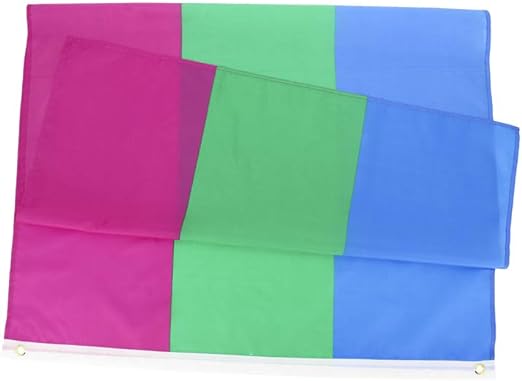
Buy on Amazon
Amazon has lots of Polysexual Flags!

Download the Polysexual Flag.
Download as (7500×4500 px) PNG or SVG.
Can I use the downloaded flag for my personal projects? Yes you can, this flag is in the public domain and you can use it whatever way you like.
How about commercial? The same, you can use it commercially and personally!
How do I know I am Polysexual?
Discovering and understanding one’s sexual orientation, including polysexuality, is a personal journey. Here are some common signs or considerations that may indicate you are polysexual:
- Attraction to Multiple Genders: If you find yourself experiencing attraction to individuals of different genders, beyond just male or female, this may be an indication of polysexuality. Recognizing a capacity for attraction across a diverse gender spectrum is a key aspect.
- Fluidity in Attractions: Polysexuality often involves a fluid and dynamic experience of attractions. If you notice that your attractions can change over time or are not restricted to a specific gender, it aligns with the characteristics of polysexuality.
- Comfort with Ambiguity: Polysexual individuals are comfortable with the ambiguity and diversity of attractions. If you find that your attractions don’t conform to a binary understanding of sexuality and you are accepting of this fluidity, it could be an aspect of your identity.
- Acknowledgment of Non-Binary Identities: Polysexuality recognizes and includes attractions to non-binary and genderqueer individuals. If you feel drawn to people who identify outside the traditional male-female binary, this may be an aspect of your sexual orientation.
- Personal Reflection and Exploration: Take time for personal reflection on your attractions and relationships. Exploring your feelings, understanding the nature of your attractions, and being open to self-discovery are crucial steps in identifying your sexual orientation.
- Validation through Labels: Some individuals find validation and a sense of belonging by identifying with a specific sexual orientation label. If the term “polysexual” resonates with your experiences and feelings, it might provide a useful framework for understanding your attractions.
- Seeking Support and Community: Engaging with online communities, LGBTQ+ groups, or talking to supportive friends can provide insights and perspectives. Connecting with others who share similar experiences can be beneficial in understanding and accepting your identity.
Remember that everyone’s journey is unique, and there is no rush or pressure to label yourself. If you’re unsure or have questions about your sexual orientation, seeking support from friends, community, or professional counselors can be helpful. It’s essential to allow yourself the time and space to explore and embrace your identity at your own pace.
Recommended books
There are several books that explore and address the experiences of Polysexual individuals, offering insights, narratives, and perspectives that can be both validating and enlightening. Here are some recommendations:
- “Stone Butch Blues” by Leslie Feinberg
This novel is a classic in LGBTQ literature and follows the life of a gender-nonconforming protagonist, exploring themes of identity and resilience.
- “Nevada” by Imogen Binnie
This novel centers around a transgender protagonist and delves into themes of self-discovery, identity, and the challenges of navigating a genderqueer existence.
- “Gender Outlaws: The Next Generation” edited by Kate Bornstein and S. Bear Bergman
This anthology features diverse voices within the LGBTQ community, including essays and narratives that encompass a wide range of gender identities and expressions. - “Genderqueer: Voices Beyond the Sexual Binary” edited by Joan Nestle, Clare Howell, and Riki Wilchins
This collection brings together personal narratives, essays, and poems that explore the experiences of genderqueer individuals, providing a rich and varied perspective. - “They/Them/Their: A Guide to Nonbinary and Genderqueer Identities” by Eris Young
A comprehensive guide that explores nonbinary and genderqueer identities, offering insights and information for those seeking to understand or navigate these experiences. - “Trans Bodies, Trans Selves” edited by Laura Erickson-Schroth
This resource covers a wide range of topics related to transgender and gender-nonconforming experiences, offering practical information and personal narratives. - “The ABC’s of LGBT+” by Ashley Mardell
Geared towards a younger audience, this book provides an accessible and informative guide to various aspects of the LGBTQ+ spectrum, including Omnisexuality. - “Trans Like Me: Conversations for All of Us” by C.N. Lester
C.N. Lester, a nonbinary activist, explores the complexities of gender identity in this thought-provoking book, combining personal experiences with broader discussions about gender. - “The Art of Being Normal” by Lisa Williamson
A fictional narrative that follows the lives of two transgender teens, this novel provides a relatable and engaging story that can resonate with individuals exploring their own identities. - “Beyond Magenta: Transgender Teens Speak Out” by Susan Kuklin
This book shares the stories of transgender and genderqueer teens, providing a platform for their voices and experiences.
These books cover a range of genres and styles, offering Polysexual individuals and those seeking to understand more about gender diversity a diverse and enriching reading list. It’s essential to explore various perspectives to gain a more comprehensive understanding of the fluidity and diversity within gender identities.
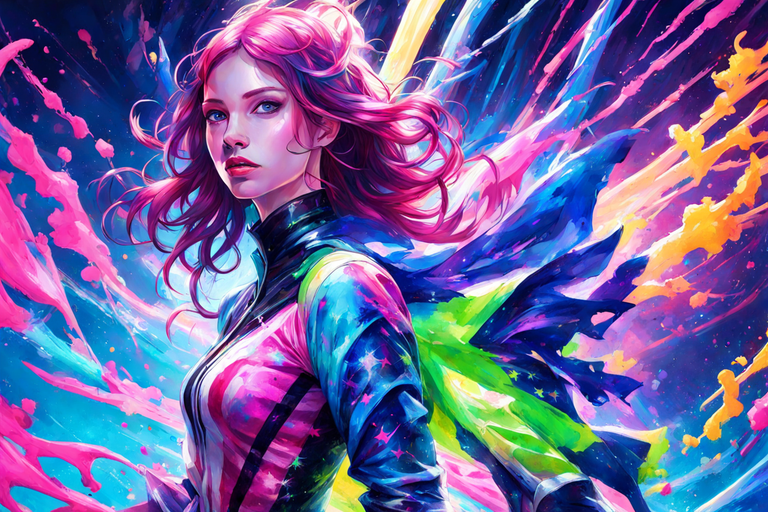
Educational content and resources:
Explore the following collection of resources and websites tailored to provide valuable support and information for individuals navigating polysexual identities. Whether you are seeking community connections, educational materials, or assistance in understanding and expressing your gender identity, these platforms have been curated to offer a diverse range of perspectives and resources.
- Nonbinary.org
- Offers a wealth of information on nonbinary and genderqueer identities.
- GLAAD‘s Tips for Allies of Transgender People
- Provides guidance for allies of transgender and gender nonconforming individuals.
- Gender Diversity
- Offers resources and support for families and children exploring gender identity.
- National Center for Transgender Equality (NCTE)
- Advocacy organization working towards policy reform and transgender equality.
- The Trevor Project
- A crisis intervention and suicide prevention organization for LGBTQ+ youth.
- Transgender Equality
- Provides resources, policy advocacy, and educational materials.
- Genderqueer.me
- A resource hub with articles, stories, and information on genderqueer identities.
- Autostraddle’s “Queer Your Tech”
- A tech and culture column that often includes gender-related content.
- Trans Lifeline
- A crisis hotline and resource for transgender individuals.
- PFLAG
- Offers support and resources for LGBTQ+ individuals, their families, and allies.
- Gender Diversity: Beyond the Binary
- A TED Talk playlist featuring discussions on gender diversity.
- Human Rights Campaign (HRC)
- Advocacy and educational resources for LGBTQ+ rights.
- Pronouns.org
- Offers guidance on using and respecting personal pronouns.
- National LGBTQ Task Force
- Advocacy organization working towards justice and equality for LGBTQ+ individuals.
- The Agender Project
- A platform for sharing experiences and resources related to agender identities.
- The Queer Encyclopedia
- A comprehensive resource with entries on a wide range of LGBTQ+ topics.
- Astraea Lesbian Foundation for Justice
- A foundation supporting LGBTQ+ rights globally, including gender-related issues.
Conclusion

The Polysexual Flag stands as a powerful emblem of identity and pride within the LGBTQ+ community. Created in 2012 by an anonymous individual, its design comprises three vibrant colors: pink for attraction to females, green for non-binary or genderqueer individuals, and blue for males. This flag, with its intentional combination of colors, symbolizes the diverse spectrum of attractions experienced by polysexual individuals. It not only fosters visibility and acceptance but also contributes to a broader understanding of sexual orientation, emphasizing inclusivity and unity within the rich tapestry of human sexuality.

FAQs and Common Misconceptions

What does each color on the Polysexual Flag represent?
The Polysexual Flag comprises three bold colors. The pink stripe symbolizes attraction to individuals identifying as female, the green represents attraction to non-binary or genderqueer individuals, and the blue signifies attraction to those identifying as male. Together, these colors visually capture the diverse spectrum of attractions experienced by polysexual individuals.
Who designed the Polysexual Flag, and when was it created?
The Polysexual Flag was designed by an anonymous individual in 2012. Its creation emerged organically from the online LGBTQ+ community, highlighting the grassroots nature of many pride symbols. Despite the lack of a widely recognized creator or formal organization, the flag has gained recognition and significance over the years.
How is the Polysexual Flag used within the LGBTQ+ community?
The Polysexual Flag serves as a powerful symbol of identity and pride within the LGBTQ+ community. Individuals proudly display the flag on personal items, clothing, and in digital spaces to express their polysexual orientation. It is also commonly featured at LGBTQ+ events and pride parades, contributing to the visibility and recognition of polysexuality within the broader community.
Are there other related flags and symbols within the LGBTQ+ community?
Yes, the LGBTQ+ community has a diverse array of flags and symbols representing different sexual orientations and gender identities. The Asexual Pride Flag (Ace Flag) shares a similar design approach with the Polysexual Flag, emphasizing visibility and recognition. Additionally, flags like the Bisexual Pride Flag and Pansexual Pride Flag represent other specific sexual orientations within the community.
Can I create my own DIY version of the Polysexual Flag?
Certainly, creating a DIY version of the Polysexual Flag is a creative and personal way to express your identity. Using the designated colors—pink, green, and blue—you can design a flag that resonates with your experiences of attraction to multiple genders. DIY versions often contribute to the visibility of polysexuality and can be proudly displayed in various personal spaces.
What is an example of Polysexuality?
An example of polysexuality is someone who experiences attractions to individuals of multiple genders, such as being attracted to women, non-binary individuals, and men. The key characteristic is the capacity for attraction to a range of gender identities beyond the binary. Polysexuality embraces a fluid and inclusive understanding of attractions.
How has the Polysexual Flag contributed to community acceptance and adoption?
The Polysexual Flag has played a crucial role in fostering community acceptance and adoption by providing a visible symbol for individuals to express their polysexual identity. Its presence at LGBTQ+ events and in online spaces has contributed to the visibility of polysexuality, fostering understanding and recognition within the broader community. The flag serves as an emblem of pride, promoting inclusivity and a sense of belonging for polysexual individuals.
How can the Polysexual Flag contribute to promoting equality and understanding?
The Polysexual Flag plays a vital role in promoting equality and understanding by visually representing the diversity within the polysexual community. Its vibrant colors symbolize inclusivity and acceptance of attractions across a spectrum of genders, fostering a broader understanding of sexual orientation. Displaying the flag in various settings contributes to the normalization of polysexuality and encourages conversations that promote equality and awareness.

Are there support networks and resources available for individuals exploring their gender identity?
Yes, numerous support networks and resources are available for individuals exploring their gender identity. LGBTQ+ organizations, online forums, and counseling services cater to those seeking guidance and understanding. Connecting with supportive communities can provide valuable insights and assistance in navigating the complexities of gender identity exploration.
What is the exact shade of pink, green, and blue in the Polysexual Flag?
While there isn’t an exact standard for the shades, the commonly accepted colors for the Polysexual Flag are a bright pink, a vibrant green, and a bold blue. The specific shades may vary slightly, and DIY versions often allow for personalization. The emphasis is on the symbolic representation of attraction to female, non-binary or genderqueer, and male individuals, respectively.
Go here to see the Pantone, RAL and HEX colors we think matches the colors the best.
What are the different types of Polysexual people?
Polysexual individuals may experience attractions in various ways. Some may identify as fluid polysexual, experiencing changes in attractions over time, while others may feel a balanced attraction to different genders. Gender-preference polysexuality involves stronger attractions to specific genders, and non-binary inclusive polysexuality centers on attractions to non-binary or genderqueer individuals. These categories reflect the diversity of polysexual experiences.
What is the Polysexual Flag?
The Polysexual Flag is a vibrant symbol with three horizontal stripes of pink, green, and blue. Each color represents a different aspect of attraction: pink for females, green for non-binary or genderqueer individuals, and blue for males. The intentional combination of these colors visually signifies the diversity within the polysexual community and serves as an emblem of pride and identity.

What does the Polysexual Flag mean?
The Polysexual Flag, with its pink, green, and blue stripes, symbolizes attraction to multiple genders. Pink represents attraction to females, green to non-binary or genderqueer individuals, and blue to males. The flag’s meaning extends beyond colors; it signifies the inclusivity and acceptance of diverse attractions within the polysexual community.
What is the role of intersectionality in the LGBT and Polysexual communities?
Intersectionality is essential in acknowledging the interconnected identities within the LGBT and Polysexual communities, recognizing the significance of factors such as gender, race, and sexual orientation.
By understanding the intersectional experiences of individuals, these communities can foster inclusivity and better address the diverse challenges faced by those navigating both multiple sexual attractions and other aspects of their identity. Embracing intersectionality promotes a more comprehensive understanding of the complexities within the LGBT and Polysexual communities.
Are there specific pronouns I should use when referring to a Polysexual person?
Pronoun usage is a personal choice, and there isn’t a specific set tied to polysexuality. Respect the individual’s pronoun preferences by asking or using the pronouns they provide. It’s essential to create an inclusive and affirming environment by using the correct pronouns, whether they are he, she, they, or others.
How does one come out as Polysexual?
Coming out as polysexual involves personal reflection and a choice to share your sexual orientation with others. Choose a time and place that feels comfortable, and express your feelings openly and honestly. It’s a process unique to each individual, and the level of detail shared depends on personal comfort and readiness.
How can I be a supportive ally to someone who is LGBT or Polysexual?
Being a supportive ally involves educating yourself about LGBT and polysexual experiences, listening actively, and respecting individuals’ identities. Use inclusive language, advocate for equal rights, and stand against discrimination. Offering support without judgment and acknowledging diverse identities are key aspects of allyship.
Is being transgender the same as being Polysexual?
No, being transgender and polysexual refer to different aspects of identity. Being transgender relates to gender identity, indicating a discrepancy between one’s assigned sex at birth and their gender identity. Polysexuality, on the other hand, is a sexual orientation indicating attraction to multiple genders.
What is the difference between Polysexuality and non binary?
Polysexuality and non-binary refer to different aspects of identity. Polysexuality is a sexual orientation involving attraction to multiple genders, while non-binary is a gender identity outside the traditional male-female binary. They represent distinct dimensions of human sexuality and gender diversity.
How to tell if i am Polysexual or Nonbinary?
Determining if you are polysexual or non-binary is a personal journey. Reflect on your attractions to understand your sexual orientation, and explore your feelings about your gender identity to determine if non-binary resonates with you. Seek support from LGBTQ+ communities, friends, or professionals to aid in self-discovery.
What is the difference between Polysexual and genderfluid?
Polysexuality and genderfluidity are distinct aspects of identity. Polysexuality involves attraction to multiple genders, while genderfluidity is a gender identity characterized by a fluid experience of gender. Polysexuality pertains to sexual orientation, while genderfluidity pertains to gender identity, illustrating the diversity within the LGBTQ+ spectrum.
Is polysexual and polyamorous the same?
No, polysexual and polyamorous are not the same. Polysexuality refers to attraction to multiple genders, while polyamory is about engaging in consensual romantic or sexual relationships with multiple partners simultaneously. They represent different aspects of identity and relationship structures within the realm of human sexuality.


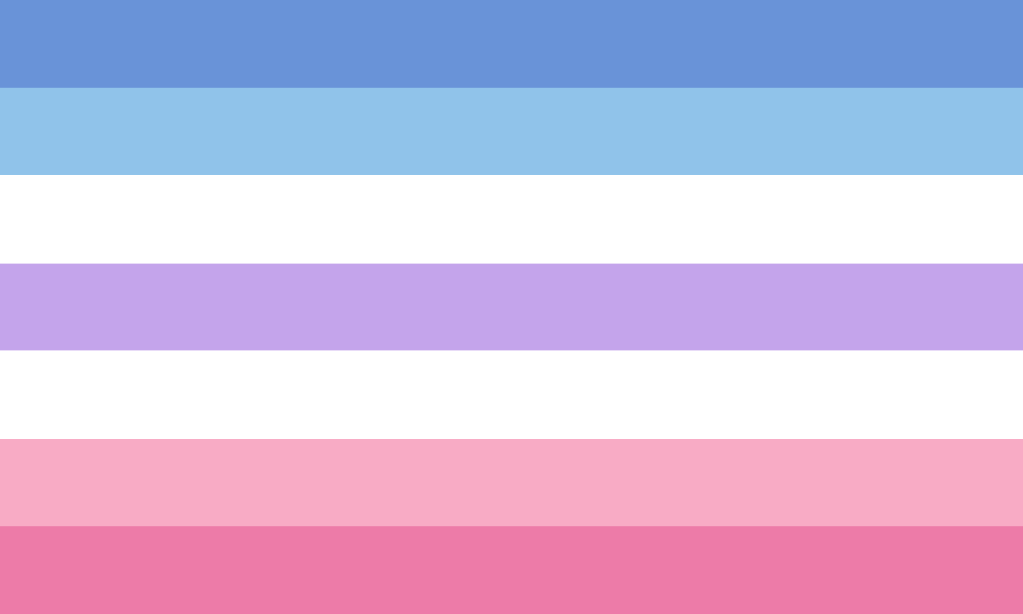


Leave a comment